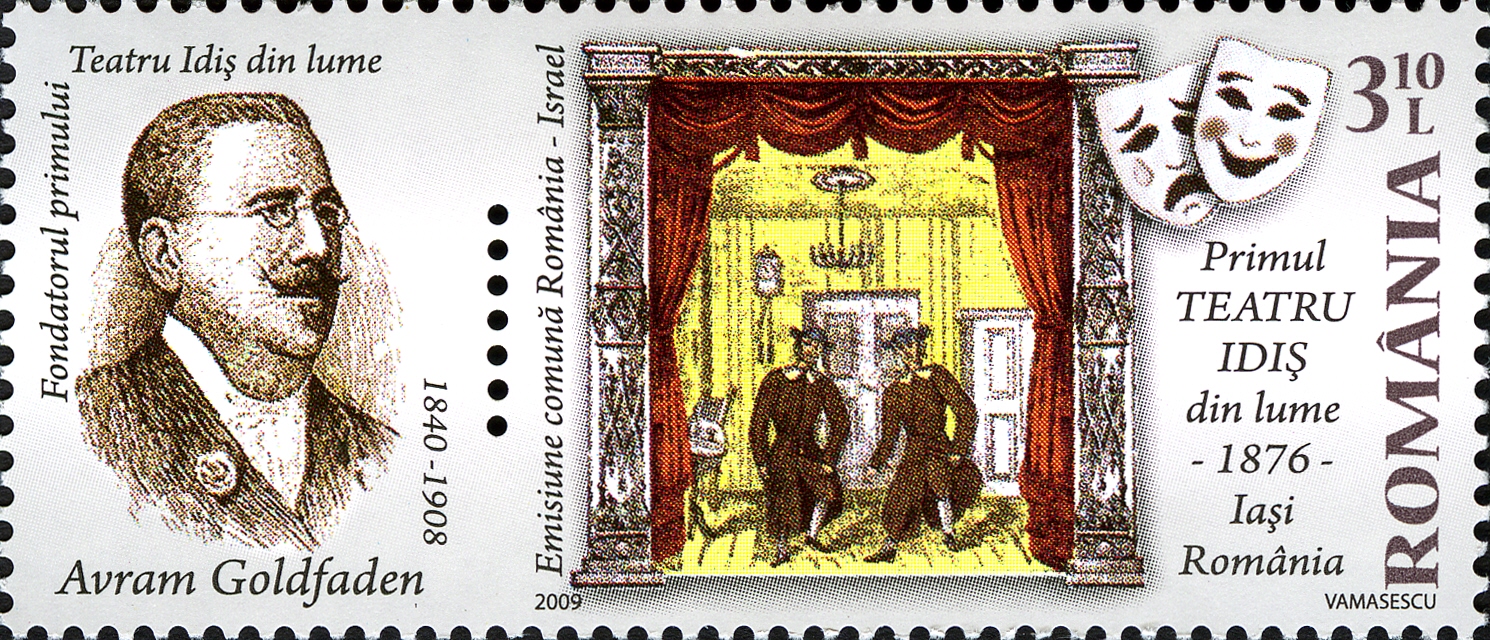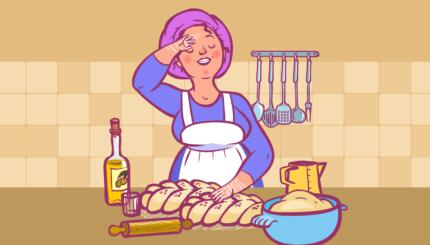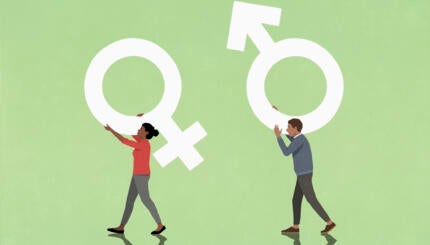In the late Middle Ages, Yiddish theater only existed in the form of folk plays. These plays were usually based on the story of Esther and were performed by strolling amateur groups, predominantly on Purim. The only other regular performances were carried out by badhanim, or professional wedding jesters. Jewish tradition considered theater to be frivolous at best. Jewish law specifically prohibited women from singing in public and men from dressing as women. These circumstances of Jewish life made it impossible for theater to develop as an institution.
It was not until the Enlightenment reached Eastern Europe in the late 1800s that the Yiddish public discovered a profound and powerful attraction to theater in its own language. As religious prohibitions and communal authority loosened, more Yiddish speakers learned about other cultures and saw theater in foreign languages. External pressures eased; particularly when Czar Alexander II legalized Yiddish secular press, publishing, and performance in Russia.
Modern Yiddish literature developed as intellectuals began to write novels and, eventually, plays for reading. Yiddish performers, called Broder singers–probably because the earliest of these singers started their careers in the Ukrainian city of Brod–performed their own songs and dramatic poems as café entertainment. An explosion of creativity overtook the Eastern European Jewish community.
Goldfaden’s Legacy
In 1876, Avram Goldfaden wrote the first professionally performed secular Yiddish plays. After Goldfaden’s debut at the Green Tree Café in Iasi, Romania, he wrote many operettas, including The Fanatic (or, The Two Kuni-Lemls); Shmendrik; Koldunye (or, The Witch); Shulamis (or, The Daughter of Jerusalem); and Bar Kochba (or, The Last Days of Jerusalem). He also wrote their scores, creating such tunes as “Raisins and Almonds,” which entered popular culture.
With your help, My Jewish Learning can provide endless opportunities for learning, connection and discovery.
By 1880, other playwrights, especially Moyshe Hurwitz and Joseph Lateiner, competed with him to write hit plays. A cadre of actors developed, many of them trained as cantors and choirboys, and they soon were joined by the first Yiddish actresses.
By the time Goldfaden died in 1909, there were many Yiddish theaters in Eastern Europe and the Pale of Settlement. Cities as far west as London also had theater companies, many of which toured. Sholem Aleichem‘s novel Vagabond Stars evokes the peripatetic lives of typical Yiddish actors in the late 19th and early 20th centuries. Producers put up shows for a season and companies were organized around stars or family units. The shows played in fine city theater as well as in beer gardens or barns. Audiences were often so poor that it was difficult to sell tickets.
Turbulent Times
In Eastern Europe in that unstable half century, local governments were powerful but short lived, and governments and even borders kept shifting. With rampant discrimination against Jews, and local governments often seeking opportunities for extortion, Yiddish theater faced the constant threat of suddenly becoming illegal. This forced actors to move often.
The May Laws of 1882, controlling and oppressive laws that prompted mass emigration, led Yiddish culture to become truly international. Many actors moved away from Europe but regularly returned to tour, just as plays continued to be performed in Europe even after the playwright immigrated to another continent.
Yiddish actors were soon known for their emotionalism, energy, and truth in characterization, and evoked passionate loyalty from their fans or “patriotn.” Among the early stars best loved in Europe were Ester Rokhl Kaminska, Ida Kaminska, Joseph Buloff, Avrom Morevsky, and in the USSR, Shlomo Michoels.
Gordin’s Contributions
The earliest commercial plays were folksy and unsophisticated, but in 1891 Jacob Gordin set out to reform repertory and production methods. Educated in Russia, though he spent much of his life in New York, Gordin wrote high quality melodramas in the style of Tolstoy. Among the best known are God, Man, and Devil and Mirele Efros.
Many of Gordin’s works were translated and performed in various European languages, as continued to be the case with many Yiddish playwrights from then on. By elevating Yiddish theater, Gordin attracted the Yiddish intelligentsia, and Yiddish drama became associated with aspirations to high secular culture and in some sense with modern Yiddish identity.
The Interwar Period
By the mid-20th century, Yiddish theater had its own repertory, with its own cultural allusions and even its own classics, such as the early plays of Goldfaden and Gordin. A variety of popular entertainments developed including operettas, dramas, comedies, revues, and cabaret, from the lowbrow to the witty and sophisticated. More intellectually ambitious fare was also offered, in the same range as the contemporaneous European avant-garde, including naturalism and symbolism.
The forms most characteristic of Yiddish drama were large intense melodramas, domestic plays of tears and laughter, and expressionist creations with more or less explicit political overtones; the majority of plays in all genres wove in some music. Plots and themes touched on all human experience, and not all plays were even about Jewish characters. However, many plays explored specifically Jewish experiences, current or historical, and Jewish problems of loyalty and identity. Translations and adaptations of non-Yiddish plays, from Shakespeare to the contemporary hits, also reached the European Yiddish stage.
The best known serious Yiddish playwrights of the early 20th century included I.L. Peretz, who was also extremely influential through his encouragement of younger playwrights, Sholem Aleichem, David Pinski, Peretz Hirschbein and Sholem Asch.
The lively Yiddish press was keenly interested in theater. Newspapers and journals published reviews of productions, and also backstage gossip. Journals and books featured serious consideration of related theory and history. Memoirs by theater artists were sometimes serialized in the press before being published in book form. Printed editions of plays were available for reading and were particularly useful to amateur theater groups. There were over a hundred such groups in Poland alone during the interwar period, in addition to organizations dedicated to study and support of Yiddish theater. They were centers of communal activity and cohesion during difficult times.
The first Yiddish art theater–devoted to artistic rather than commercial purposes–was founded in Odessa in 1908, by Peretz Hirschbein with the active participation of actor Jacob Ben-Ami. Several other professional troupes followed in the next decade. The best known was the Vilna Troupe, eventually based in Warsaw, where in 1920 it premiered its hit, The Dybbuk. Other prominent companies based in Poland included the Warsaw Yiddish Art Theater (VYKT) and the Yung Theater.
Anti-Semitism and War
In addition to established troupes, artistic and commercial shows played seasons in Eastern Europe, Vienna, Paris, and London. Audiences outside of the Yiddish community attended and reviewed more serious productions. At the same time, however, pogroms and intermittent chaos in Central and Eastern Europe and the USSR bedeviled artists and audiences and undermined the stability necessary to build institutions.
Warsaw was still hosting Yiddish theater as late as 1939. London was the only European city with Yiddish theater throughout WWII. In the wartime Polish ghettos, performances took place, especially revues depicting the hardships of ghetto life. Some rudimentary performances actually occurred in Nazi concentration camps. After the war, shows were put on in displaced persons camps, by survivors and guest artists.
Yiddish theater in Russia has a separate history. There had been theater within the Pale of Settlement, though almost never in Moscow or St. Petersburg, where very few Jews were allowed residence permits. The Russian Revolution of 1917 brought about a great artistic flowering. At the peak, in the 1930s, some 20 state-supported Yiddish theatres operated across the USSR, in addition to youth theater, traveling theaters, and even theater schools. The finest and most adventurous was the Moscow Yiddish State Art Theatre (GOSET), whose early costumes and sets, along with the theatre’s foyer, were designed by Marc Chagall.
Under Stalin, however, Jewish artists disappeared and audiences were afraid to attend performances. By 1949, the last Yiddish theater closed; in 1952, on the night Stalin purged the Soviet Union of its remaining Yiddish artists, the last of the Yiddish theater’s beloved actors were shot.
Since the 1950s
In the 1950s, in Europe as elsewhere, the number of Yiddish speakers dwindled, though occasional performances of professional and amateur plays continued through the 1980s from Stockholm to Edinburgh, and Antwerp to Vienna. The collapse of the USSR brought a brief flowering of productions to Russia and Ukraine. Today the Ester Rokhl Kaminska State Yiddish Theater in Warsaw and the Yiddish State Theater in Bucharest continue to offer repertory in Yiddish, with simultaneous translations and a growing number of non-Jews in the casts.
Elsewhere in Europe there are occasional productions; another language is often mixed in with the Yiddish dialogue and song lyrics. There is considerable academic interest in Yiddish theater, with a proliferation of university courses, academic conferences, and books on the subject published in several languages. Yiddish theater, which existed at full energy for less than a century, nevertheless and against all odds, flowered as an artistic creation and social institution, and has come to serve as a popular metaphor for modern Yiddish culture.



